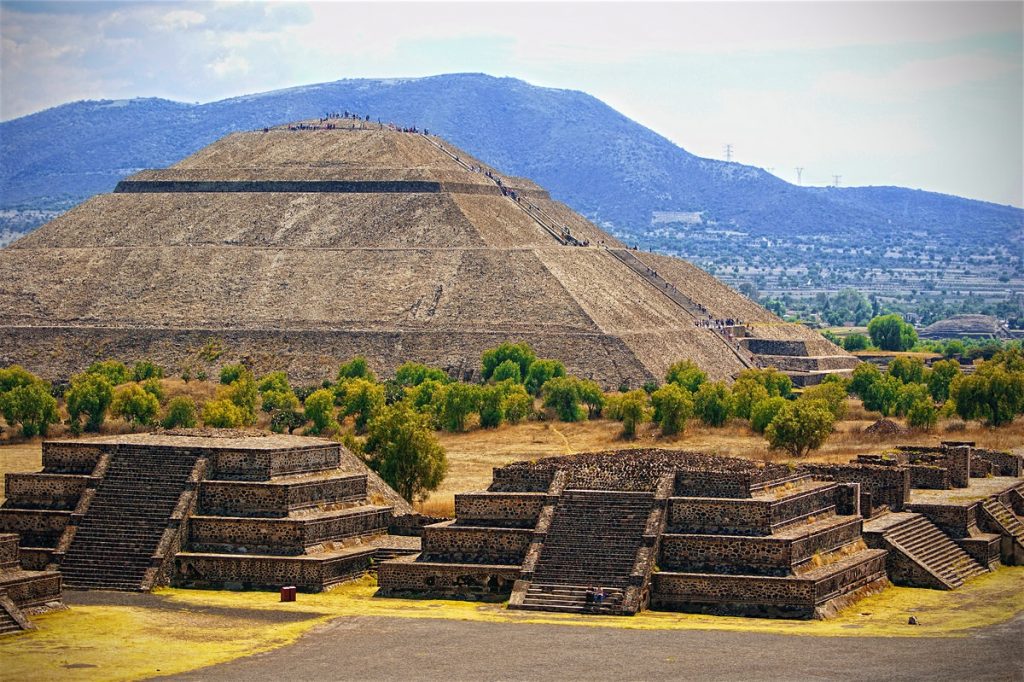MÉRIDA, March 19, 2020.- “For the first time, Chichén Itzá became the most visited archaeological zone in the country, during the first two months of the year, overtaking Teotihuacán, with a difference of three percentage points”, revealed the National Institute Anthropology and History (INAH).
The main reason for the decrease in the tourist influx to Mexico, is of course, the presence and impact of the new Covid-19 coronavirus, so the situation will be more noticeable for at least the next two months.
In the last 10 years, Teotihuacan remained as the site with the highest influx of archaeological tourism, but Chichén Itzá registered record numbers during January and February.

On the other hand, due to the lack of tourism promotion, Uxmal and Ek’Balam were displaced by other pre-Columbian cities.
During the first two months of this year, 2,778,879 visitors entered the 176 archaeological zones nationwide, with a reduction of 1.46 percent compared to the same period of the previous year, when the total was 2,819,981 people.
From January to February of the current year, 441 thousand 407 tourists arrived in Teotihuacan, with a decrease of 29.3 percent compared to last year; while in the case of Chichén Itzá, the increase was 12.44 percent, as it went from 432,368 to 486,156 visitors.
Tulum had 322,316 visitors, 20.8 percent less than the same period last year.
That is, of the total number of people who entered the country’s pre-Columbian cities, 17.5 percent entered Chichén Itzá, while 15.9 percent went to Teotihuacan and 11.6 percent to Tulum.
Only these three pre-Hispanic cities were attended by 45 percent of all people, just under half of archaeological tourism.
Uxmal was ranked ninth in the national table, with 2.5 percent of the national total, Ek’Balam was 16th, with 1.15 percent, and Dzibilchaltún 17th, with 1.05 percent.
687 thousand 58 people have entered the 17 archaeological zones open to the public in the state, as well as museums, with an increase of 11.5 percent over last year, when the accumulated was 599 thousand 849.
Of the total, 359 thousand 647 were foreigners, 52.3 percent, and 327 thousand 411 nationals, 47.7 percent.
The archaeological monument areas were visited by 668 thousand 870 individuals, 72.7 percent in Chichén Itzá alone, followed by Uxmal, with 69 thousand 191 people, 10.35 percent.
Likewise, in Ek’Balam there were 31 thousand 903 visitors, 4.77 percent; in Dzibilchaltún there were 29,666, 4.34 percent; in Mayapán they were 11 thousand 547, 1.73 percent; Xkambó, with eight thousand 794, 1.25 percent, and Kabah, with eight thousand 334, 1.25 percent.
The rest of the sites were left with less than one percentage, such as the Loltún Caves, with 6,287 attendees, 0.94 percent, followed by Labná, with 3,342; Sayil, with three thousand 238, Aké, with two thousand 925, the Caves of Balamcanché, with two thousand 49, and Izamal, with two thousand 29.
Similarly, Acanceh, with 1,877 tourists; Oxkintok, with one thousand 522; Chacmultún, with 610, and in the case of Xlapac, INAH did not provide the data.
The Yucatan TimesNewsroom


